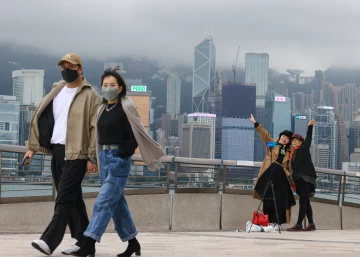(Submitted by G. Angelini, Hong Kong for the 2015 Hotel Yearbook)
In general, the growth of the Chinese economy is slowing as compared with the growth of the past 10+ years but travel, within and out of China, is still robust and growing year after year supported by investments in new airports (including improvements in air space management), investments in general infrastructure & logistics, airlines, ports etc…plus of course the increased disposable income and spending power of the Chinese people.

Chinese tourism development is no longer in the early stages. China is progressing very fast on becoming a big economic and cultural power and will make a huge impact on the pattern of the global travel and tourism industry. China (including several other Asian countries) will continue to set trends and creativity throughout the entire hospitality industry. Travel is becoming a “human right” and not just a “human need”. It is to be noted that for both the wealthy and the middle class, travel is by far the preferred leisure pursuit. The rapid development of the luxury market in China and Asia is sending ripples through the entire industry.
Increasing life and work pressure, together with concerns over issues such as food safety and pollution, prompt well-off Chinese to pay increasing attention to healthy issues with increased medical checks, more attention to diet, sports activities, leisure time and overall look & feel.
When talking about China, we are talking about huge numbers like close to 100 million outbound tourists in 2014 and it is expected to grow to 200 million by the year 2020. It is also important to understand the saving habits-culture of the Chinese population and of the reported and of the “hidden” wealth in China.
Top preferred destinations for leisure travelers within and out of China (from the Hurun report);
- Regional Travels; Hainan, Hong Kong, Macao, Tibet, Yunnam, Hangzhou, Xinjang, Beijing.
- International Travels; Australia, France, Dubai, Switzerland, Maldives, South Korea, USA, Thailand, Japan, Singapore, Germany, UK. Sightseeing and shopping remains the main purpose of the group travelers. Gambling (Macao, Singapore, Nevada and others) has been and will remain one of the key reason to travel out of China for an ever increasing number of people.
As far as the wealthy travelers, tourist destinations with challenges and more prominent features are becoming a new trend among Chinese super tourists like South Pole, North Pole, Kenya, Selected Cruises and others. In 2013, the so-called super tourists travelled abroad four times on average over a total of 36 days of which more than 60% on leisure travels with an average spending of well over USD 100K per person per year and those are attractive statistics to many in the hospitality business. A very fast trend is also the “real estate buying” holidays and “education-schooling” tours toward the West in particular Australia, USA, UK but there are also other destinations for those.
Gifting remains very important for Chinese travelers with jewelry topping the list of preferred items followed by branded luxury fashion items, expensive red wines & spirits, watches, health care products, electronic and gift items not available/nor produced in China. To be noted that in few key destinations like Hong Kong, Macao, Singapore and others, there has been a drop on spending by Chinese tourists as compared to previous years. One of the reason of this is that Chinese are now travelling to more destinations and are smart shoppers when it comes to price and value.
Online social media remains the most popular source of information for potential leisure travelers out of China followed by TV & Newspaper news and “word of mouth” that is becoming very important.
On the hotel’s industry business situation, in most part of the World, luxury hotels have recovered from the Global recession far more quickly than other economic sectors. Most of it is attributed to the new sources of business from the developing nations with China clearly leading the way. Researches shows that on choosing hotels, top consideration for Chinese is; 1-location, 2-brand, 3-price (note that price comes 3th).
As for the situation of the hotel industry within China, the country in general is experiencing an oversupply of top of the line-5 star-deluxe hotels in most areas. This is as result of developers wanting more of those quality hotels-brands combined with the many new multi-purpose developments with consequence of direct impact on low occupancies and very competitive rates in markets challenged by an oversupply of upmarket properties. With the fast growing of the middle class, present demand is more for mid market-mid price hotels that can be developed at lower cost and can generate better ROI. Also to be noted that the government, who was one of the best customer-user of top of the line hotels, has made dramatic cut backs on spending-entertaining and this is impacting most of the 5 star hotels within the country.
It is a fact that more than half of the luxury hotels being developed by the world’s most recognized groups are in the Asia-Pacific region, and most of that area’s new projects are in China. A problem that the hotel industry is facing, including Asia-China, but has not done much yet on how to respond to the likes and dislikes (expectations) of the future travelers from the fast developing economies and wealthy clientele, China at the forefront, as those will be better traveled than their predecessors and much harder to please in particular the younger generation as they will start traveling differently. A bit of work to be done by the industry…….
